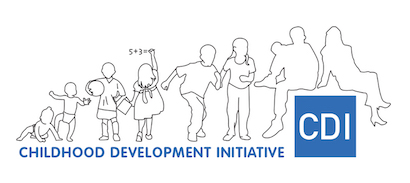
Community spirit in Tallaght in the face of tragedy
The recent murders of eight-year-old twins and their 18-year-old sister have shaken those living and working in Tallaght, the awfulness of these losses have touched people way beyond the geographical boundaries of this community. Their youth and the violence of their deaths are factors that leave us reeling, unable to imagine the grief, the heartache, and the questions which will remain with the family and those who know them which may never be answered.
These tragic events have shone an unwanted spotlight on a community that has had its fair share of difficulties in the past. Although Dublin 24 is now a very mixed and eclectic suburb, with a hospital, University campus, and over 40 primary schools, it also has pockets that have continued to experience high levels of disadvantage and poverty.
What research tells us about community spirit in Tallaght
Those of us working in disadvantaged communities understand that poverty is about much more than money. It is about our aspirations for ourselves and our children; it’s about how we experience the services which are there to support us, and how we understand our place in the community. Poverty is as much to do with our spirit and dreams as it is with our ability to pay the bills.
Research undertaken by the Childhood Development Initiative over many years has identified difficulties and areas requiring attention; the most consistent message recurring through every consultation and survey is that people feel a sense of belonging in Tallaght. Residents articulate the difficulties and challenges here, but they are also clear that they don’t want to live anywhere else. People speak of their neighbours as ‘having their back’. They refer to the way people step up at times of need, and the great sense of camaraderie that exists, often enabled or at least maximised by the many communities and voluntary organisations and processes that are well established.
Bereavement at home and abroad
Two other events of recent weeks have resonated with me, although at first glance, the common thread may not be apparent. The first is the death of Queen Elizabeth, and the resultant expressions of mourning from across the UK and beyond. I’ve been astounded at the messages posted in my school pals’ WhatsApp group (almost all of us being second-generation Irish), as they express feelings of deep sadness and loss. This is particularly true of those who have lost their own mothers, and for whom the Queens’ death was resonant of past losses. It is also I’m sure a reflection of the dedication to public service so epitomised by the Queen, and perhaps a concern for the diminishing evidence of such selfless giving.
Closer to home, I attended the funeral of Dr. Tom Cavanagh in Fermoy, Co Cork. Like the Queen, he was a man in his 90s who had lived a good and full life, and he died at home, as was his wish, with his family around him. It’s hard to think of more different circumstances to the deaths of Lisa, Chelsea, and Christy. Tom founded the Tomar Trust which supported interventions in schools and communities across Munster. Tom’s son Ronan spoke in his eulogy of his father’s passion for community, and his belief that together we can be so much stronger. The priest quoted Matthew’s version of the sermon on the mount, in which Jesus advised that when giving to the needy ‘don’t let your right hand know what your left hand is doing’. In other words, don’t seek reward or affirmation; give because you can, rather than because you want to be seen to do so. This is a principle by which Dr. Tom lived. I wish I had met him.
Standing shoulder to shoulder, showing community spirit in Tallaght in the face of tragedy
And so community coming together, giving selflessly, holding ourselves to account for what we bring to the lives of others, these echo loudly in the legacies of both Queen Elizabeth II and Dr. Tom Cavanagh. On several occasions recently, standing in drizzling rain in Rossfield Avenue, or watching the horse-drawn carriages take three young lives to their resting place, this community spirit and desire to stand together was very much in evidence. The balloons which were donated; a local sandwich shop that sent down trays of refreshments; volunteers who immediately stepped up to open the community centre to support residents; the numerous statutory and not-for-profit organisations which have been on-site offering support and providing a listening ear to the community which is bereft and traumatised. These are all good things. The lives of Lisa, Chelsea, and Christy were senselessly lost. Local efforts of support may seem an inadequate response to the enormity of grief being felt. The impact of these deaths will resonate and influence for a long time to come, and it is too soon to begin to think about what these long-term effects might be, and how we can support the communities affected. I believe that for some, a warm welcome and a familiar face in the community centre, a reminder that we are not alone, will be a source of comfort. Knowing that there are counsellors available if I want to talk is reassuring. Being able to stand shoulder to shoulder with neighbours and friends allows us to cry and acknowledge the grief, even if it is just in this moment.
Marian Quinn,
CEO, Childhood Development Initiative





